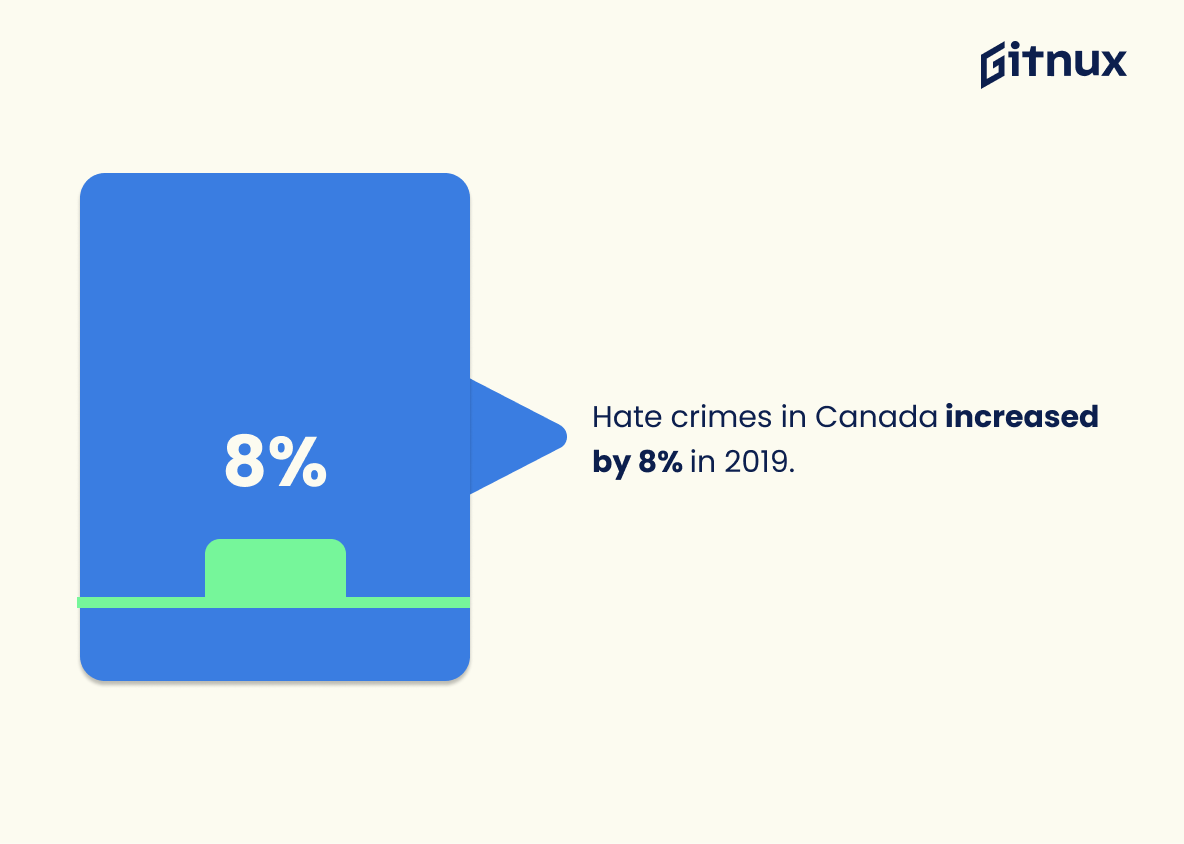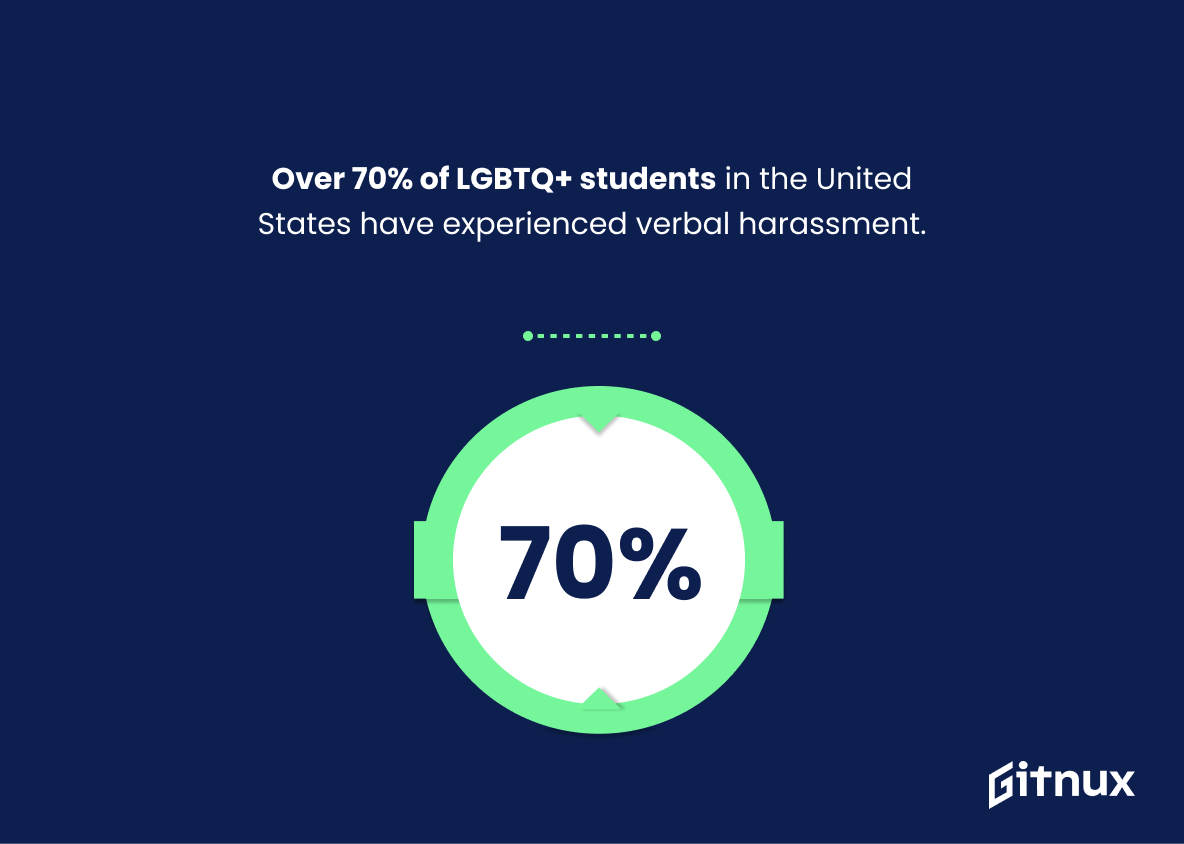Hate speech is a growing problem in many countries around the world. From online harassment to physical threats, hate crimes are on the rise and have serious consequences for those affected by them. In this blog post, we will be looking at some of the latest statistics related to hate speech from various sources across different countries. We’ll explore how these numbers have changed over time and what they mean for our society today. Through understanding these figures, we can better understand why it’s so important to take action against hate speech now more than ever before.
Hate Speech Statistics Overview
In 2021, over 33% of U.K. adults experienced some form of online hate speech.
This statistic is a stark reminder of the prevalence of online hate speech in the U.K. today. It highlights the need for greater awareness and action to combat this issue, as well as the importance of understanding the impact it can have on individuals and communities. It is a call to action for us all to take a stand against hate speech and ensure that everyone can feel safe and respected online.
About 36% of targeted harassment is based on political views.
This statistic is a stark reminder of the prevalence of political-based harassment in our society. It highlights the need for greater awareness and understanding of the issue, as well as the need for more effective measures to combat it. It also serves as a warning to those who may be targeted for their political views, and a reminder that they are not alone.
In 2020, terrorist plots and attacks in the United States increased by 50%.
This statistic is a stark reminder of the growing prevalence of hate-fueled violence in the United States. It serves as a warning that the spread of hate speech can have serious consequences, and that it is essential to take steps to combat it.
Hate crimes in Canada increased by 8% in 2019.
This statistic is a stark reminder of the prevalence of hate crimes in Canada, and the need for greater awareness and action to combat them. It highlights the urgency of the issue, and the importance of understanding the scope of hate speech in our society. It is a call to action for all Canadians to take a stand against hate speech and to work together to create a more inclusive and tolerant society.
Over 70% of LGBTQ+ students in the United States have experienced verbal harassment.
This statistic is a stark reminder of the prevalence of hate speech in the United States. It highlights the fact that LGBTQ+ students are disproportionately targeted with verbal harassment, and that this form of discrimination is still a major issue in our society. It is a call to action to take steps to ensure that all students, regardless of their sexual orientation or gender identity, are able to feel safe and respected in their learning environment.
In 2020, there was a 27% increase in online hate crime reports in the U.K.
This statistic is a stark reminder of the prevalence of hate speech in the U.K. in 2020. It highlights the need for increased awareness and action to combat this growing problem. The 27% increase in online hate crime reports is a worrying trend that cannot be ignored. It is essential that we take steps to address this issue and ensure that everyone is able to express themselves without fear of being targeted for their beliefs or identity.
More than 80% of Gen Z internet users in Brazil, India, Nigeria, and the United States have witnessed online hate speech.
This statistic is a stark reminder of the prevalence of online hate speech in the digital age. It highlights the fact that this type of speech is not only a problem in certain countries, but is a global issue that needs to be addressed. It also serves as a warning to those who use the internet, as it shows that even in countries with strong internet regulations, hate speech is still a problem. This statistic is a call to action for governments, businesses, and individuals to take steps to combat online hate speech and create a more inclusive online environment.
There was a 43% increase in anti-Semitic incidents reported in the US between 2019 and 2020.
This statistic is a stark reminder of the alarming rise in anti-Semitic incidents in the US over the past year. It serves as a powerful reminder of the need to take action against hate speech and to ensure that all people are treated with respect and dignity.
Over 50% of online gamers have experienced hate speech or cyberbullying.
This statistic is a stark reminder of the prevalence of hate speech and cyberbullying in the online gaming community. It highlights the need for greater awareness and action to be taken to protect gamers from such abuse. It also serves as a warning to those who may be tempted to engage in such behavior, as it shows that it is not only unacceptable, but also increasingly common.
Approximately one-third of online users are exposed to extremist content.
This statistic is a stark reminder of the prevalence of extremist content on the internet, and how it can easily be accessed by online users. It highlights the need for greater awareness and regulation of hate speech, as well as the need for more effective measures to protect users from such content.
In 2018, Facebook removed 2.5 million pieces of hate speech content.
This statistic is a powerful reminder of the prevalence of hate speech on social media platforms, and the need for companies like Facebook to take action to combat it. It highlights the importance of monitoring and removing hate speech content, and the need for continued vigilance in order to ensure that such content does not spread unchecked.
Racist hate speech accounts for around 53% of all hate speech reported on Facebook.
This statistic is a stark reminder of the prevalence of racism in our society. It highlights the need for greater awareness and action to combat racism and its associated hate speech. It also serves as a reminder of the importance of monitoring and reporting hate speech on social media platforms, as it is a major source of such speech. This statistic is a call to action for us to take a stand against racism and its associated hate speech.
YouTube removed over 89,000 channels for hate speech violations in 2019.
This statistic is a stark reminder of the prevalence of hate speech on YouTube, and the need for continued vigilance in combating it. It highlights the importance of taking action against hate speech, and the need for organizations to remain vigilant in their efforts to remove it from their platforms. It also serves as a warning to those who may be tempted to engage in hate speech, that there are serious consequences for doing so.
In Australia, one in five children have experienced cyberbullying.
This statistic is a stark reminder of the prevalence of cyberbullying in Australia, and serves as a call to action to address the issue. It highlights the need for greater awareness and education around the dangers of hate speech, and the importance of creating a safe online environment for children.
28% of Americans have experienced severe forms of online harassment, including physical threats or targeted harassment.
This statistic is a stark reminder of the prevalence of online harassment in the United States. It highlights the need for greater awareness and action to combat hate speech and other forms of online harassment. It also serves as a reminder that online harassment is a real and serious issue that affects millions of people.
Hate crimes against transgender individuals increased by 40% in England and Wales from 2018 to 2019.
This statistic is a stark reminder of the alarming rise in hate crimes against transgender individuals in England and Wales. It serves as a wake-up call to the public that hate speech is still a major issue in the region and that more needs to be done to protect the rights of transgender individuals.
In Germany, the number of violent far-right crimes increased to 986 in 2020 from 849 in 2019.
This statistic is a stark reminder that hate speech can have real-world consequences. The increase in far-right violence in Germany is a sign that hate speech is becoming more prevalent and is leading to an increase in violence. This is a worrying trend that needs to be addressed in order to ensure the safety of all citizens.
Conclusion
The statistics presented in this blog post demonstrate the alarming prevalence of hate speech and related crimes around the world. In 2020, hate crimes against Asian Americans in Los Angeles increased by 114%, approximately 41% of Americans experienced online harassment, over 33% of U.K. adults experienced some form of online hate speech, 36% targeted harassment was based on political views, terrorist plots and attacks in the United States increased by 50%, there was an 8% increase in Canada’s reported hate crimes from 2019 to 2020, 3,400 xenophobic incidents were reported against Chinese diaspora and people of East Asian descent that same year; LGBTQ+ students have also been subject to verbal abuse with 70%. Additionally reports for online crime rose 27 %in UK while 80 percent Gen Z internet users witnessed it across Brazil India Nigeria & US . Anti-Semitic incidents went up 43 percent between 2019 &2020 , 53 percent racist content removed from Facebook , 89000 channels deleted due to violation YouTube’s policy towards Hate Speech Australia one fifth children faced cyberbullying 28percent American suffered severe forms 40percent transgender individuals subjected violence England Wales 986 violent far right crime Germany all these figures are a testament how pervasive problem is becoming globally . It is clear that more needs be done address issue both offline as well as digital platforms before situation escalates further
References
0. – https://www.hatebase.org
1. – https://www.www.bbc.com
2. – https://www.www.statista.com
3. – https://www.www.reuters.com
4. – https://www.www.pewresearch.org
5. – https://www.www.glsen.org
6. – https://www.www.europol.europa.eu
7. – https://www.www.ncab.org.au
8. – https://www.www.independent.co.uk
9. – https://www.onlineharassmentfieldmanual.pen.org
10. – https://www.www.ft.com
11. – https://www.www.csis.org
12. – https://www.www.ofcom.org.uk
13. – https://www.www.adl.org















